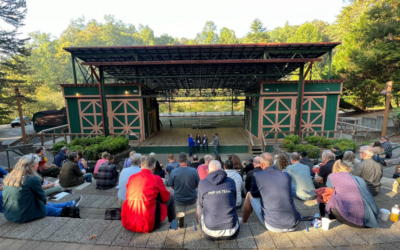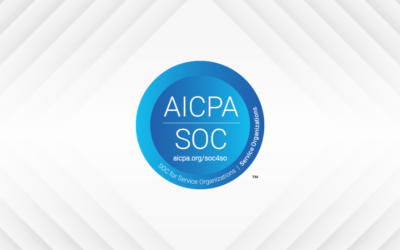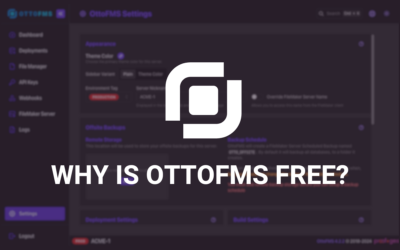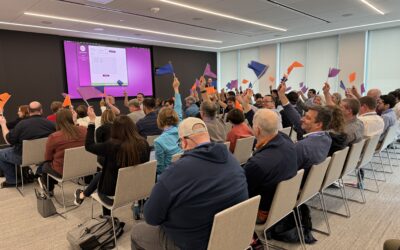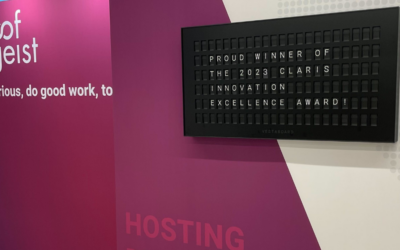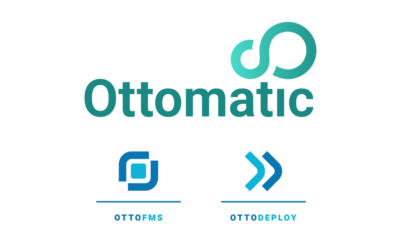Join us for PauseOnError 2024: FileMaker Summer Camp, a serene retreat for Claris enthusiasts at Ramah Darom Retreat Center in Clayton, GA! Details on early registration.
Understanding Proof+Geist’s SOC2 certification
Proof+Geist achieves SOC2 certification, reaffirming our commitment to safeguarding sensitive data and honoring the trust of our valued clients and partners.
I can’t believe OttoFMS is free!
Earlier this February, we released new versions of the Otto family of Modern FileMaker developer tools, OttoFMS and OttoDeploy, and made them available to everyone for free. We shared this news at Claris Engage 2024, and made a lot of people happy. But we also kept getting some variation of the question, “there’s a catch, right?!”
The answer is no, there isn’t a catch, but there are trade-offs.
Reflections on Claris Engage 2024 – State of the Union
Claris Engage is back! More than 600 developers, Claris partners, and Claris employees gathered at the Apple campus in Austin, Texas for three days in February, marking the first in-person Claris conference since 2019. Engage...
Claris Engage 2024 Recap
It's wild that Claris Engage 2024 has come and gone. Over 600 of us gathered at the Apple Austin Campus February 6-7, 2024, surrounded by leaders, developers, and an excited community. Here’s my not-so-quick recap. A passionate community The energy at Claris Engage...
Proof+Geist wins the Claris Innovation Excellence Award for Ottomatic
We are thrilled to share that Proof+Geist is the proud recipient of the Claris Innovation Excellence Award (2023) for Ottomatic. We created Ottomatic because our team needed world-class infrastructure and a cloud platform to support our Modern FileMaker work. We...
Claris Engage 2024 Updates and Promo Extravaganza!
Event Kickoff: Claris Engage 2024 Starts TODAY, February 6th! Claris Engage 2024 is finally here. It's not just any event; it's THE event for folks who breathe, live, and dream FileMaker and all things Claris. And guess what? We're not just attending; we're also...
Ottomatic Cloud Console and more… Launch announcements!
Dear Friends, I’m very proud to officially announce the launch of Ottomatic Cloud Console, OttoFMS, and OttoDeploy! We built Ottomatic because we needed a world-class infrastructure and cloud platform to support our modern FileMaker work. We couldn’t find an existing...
The Context Podcast: Claris Engage 2024
Featuring: Andrew LeCates, Director of Product Marketing and Evangelism Todd Geist Ernest Koe Martha Zink Get ready for another exciting episode of The Context Podcast, featuring Andrew LeCates from Claris. In this episode, Andrew joins Proof+Geist’s Martha...
Proof+Geist speakers and sessions at Claris Engage 2024
Proof+Geist is excited to participate in Claris Engage 2024, where our eight speakers will lead sessions covering foundational FM techniques and dig into exploratory topics. We can’t wait to share our tips, tricks, and techniques with you! Advanced modern Claris...
Claris Engage 2024: See you in Austin!
by Martha Zink and Chardonnay Needler It’s the 25th live event hosted by Claris, and we are excited to be premier sponsors! In a world still adjusting to the aftermath of a global pandemic, Engage 2024 is more than just another event or the next version of DevCon –...
Claris Pro 40.2.2: Effortless Migration and Further Compatibility
written by Jennifer Vokoun This August, Claris introduced a plan to unify its platform, integrating Claris FileMaker, Claris Connect, and Claris Studio (originally released as a separate product, Claris Pro will eventually be discontinued, and its integration features...

